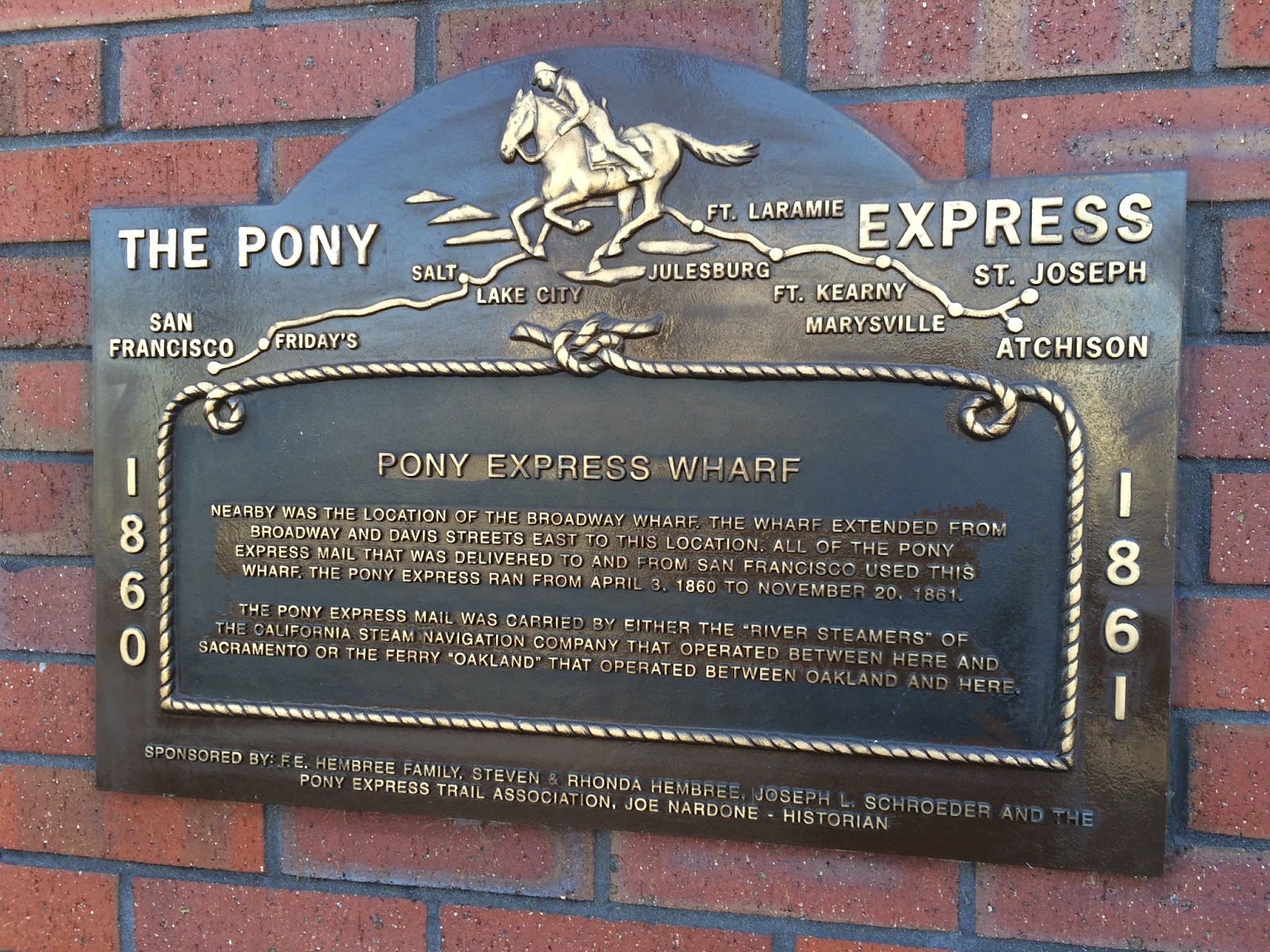I passed by this sign yesterday and I was intrigued by the Pony Express and wanted to research more about it. I had heard about the Pony Express and I wondered how this helped shape San Francisco's history here.
From wikipedia:
The Pony Express was a mail service delivering messages, newspapers, mail, and small packages from St. Joseph, Missouri, across the Great Plains, over the Rocky Mountains and the Sierra Nevada to Sacramento, California, by horseback, using a series of relay stations. Officially operating as the Leavenworth and Pike's Peak Express Company of 1859, which in 1860 became the Central Overland California and Pikes Peak Express Company, this firm was founded by William H. Russell, Alexander Majors, and William B. Waddell all of whom were notable in the freighting business.[1] During its 18 months of operation, it reduced the time for messages to travel between the Atlantic and Pacific coasts to about 10 days.[2] From April 3, 1860, to October 1861, it became the West's most direct means of east–west communication before the telegraph was established and was vital for tying the new state of California with the rest of the United States.
In 1860, there were about 157 Pony Express stations that were about 10 miles (16 km) apart along the Pony Express route.[6] This was roughly the distance a horse could travel at a gallop before tiring. At each station stop the express rider would change to a fresh horse, taking only the mail pouch called a mochila (from the Spanish for pouch or backpack) with him.
Stations[edit]
There were 184 stations along the long and arduous route used by the Pony Express. The stations and station keepers were essential to the successful, timely and smooth operation of the Pony Express mail system. The stations were often fashioned out of existing structures, several of them located in military forts, while others were built anew in remote areas where living conditions were very basic.[19] The route was divided up into five divisions.[20] To maintain the rigid schedule, 157 relay stations were located from 5 to 25 miles (8 to 40 km) apart as the terrain would allow for. At each swing station, riders would exchange their tired mounts for fresh ones, while "home stations" provided room and board for the riders between runs. This technique allowed the mail to be whisked across the continent in record time. Each rider rode about 75 miles (120 km) per day.[21]

No comments:
Post a Comment